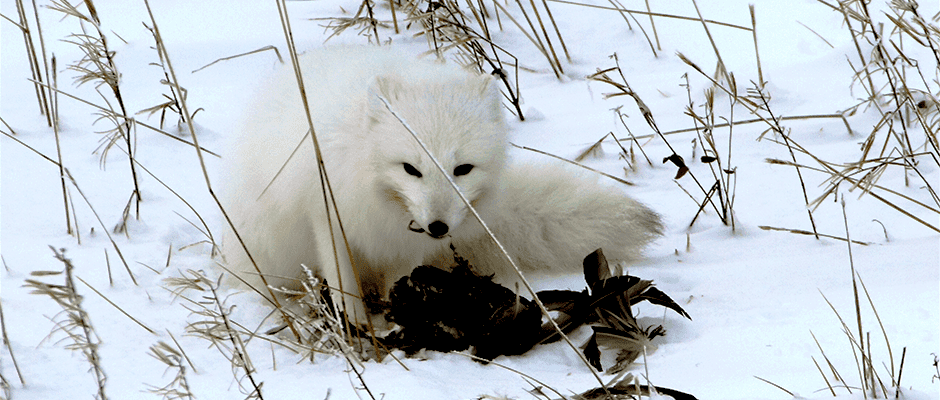Share this article
Arctic fox dens attract their prey
When Arctic foxes (Vulpes lagopus) make dens, they’re not just creating shelter for themselves. They appear to attract lemmings (Dicrostonyx richardsoni) to nest at their dens, too, even though lemmings are one of the foxes’ main prey sources.
“Lemmings are eaten by foxes, so it seemed a bit strange that they were attracted to the home of their major predator,” said TWS member James Roth, an associate professor in the Department of Biological Sciences at the University of Manitoba and a coauthor of a recent study on the phenomenon published in Ecosphere. “We think it’s because they’re attracted to the increased productivity of vegetation on fox dens because of nutrient inputs and we found that vegetation on fox dens is more nutrient rich.”
Because foxes in the tundra face a poor nutrient environment, they establish and reuse den sites in suitable areas, Roth said. Then, foxes bring back Canada geese (Branta canadensis) or snow geese (Chen caerulescens) to feed their litters, and the soil becomes enriched with nutrients from the extra decomposing prey, leaving bright green spots of sea lyme grass and willows on the otherwise sparse landscape.
In the study Roth and his student, Tazarve Garajehdaghipour, examined Arctic fox dens used by lemmings, which rely on winter snow for insulation. The vegetation from the fox dens traps snow, providing suitable habitat and food sources for them.
The researchers found winter nests built by the lemmings under the snow on nearly 70 percent of the fox dens. They also found that these dens had twice the vegetation cover and 50 percent greater nitrogen content in grass than control areas. This means the foxes created nutrient rich soil on their dens, Roth said. That soil provides quality habitat for lemmings by promoting plant growth.
This could have different effects on the lemmings based on whether it is a high-density year or a low-density year for the species, Roth said. Lemming densities fluctuate in population cycles annually, and this research took place during a winter of low lemming densities, when foxes tend to scavenge on seals killed by polar bears, reducing predation risk for lemmings.
In those years, Roth said, fox dens can provide more of a refuge for them, especially with Arctic warming reducing the snow that lemmings rely on. During high lemming years, however, there is a possibility they could become prime targets for the foxes, since they are right on their dens.
“This is an interesting example of how changes in the cryosphere and ice and snow condition are affecting arctic predators because of impacts to their prey,” Roth said.
Header Image: An Arctic fox feeds on a goose in Manitoba. Decomposing goose prey helps create nutrient-rich soil that lemmings later use as suitable habitat. ©Charles Anderson








